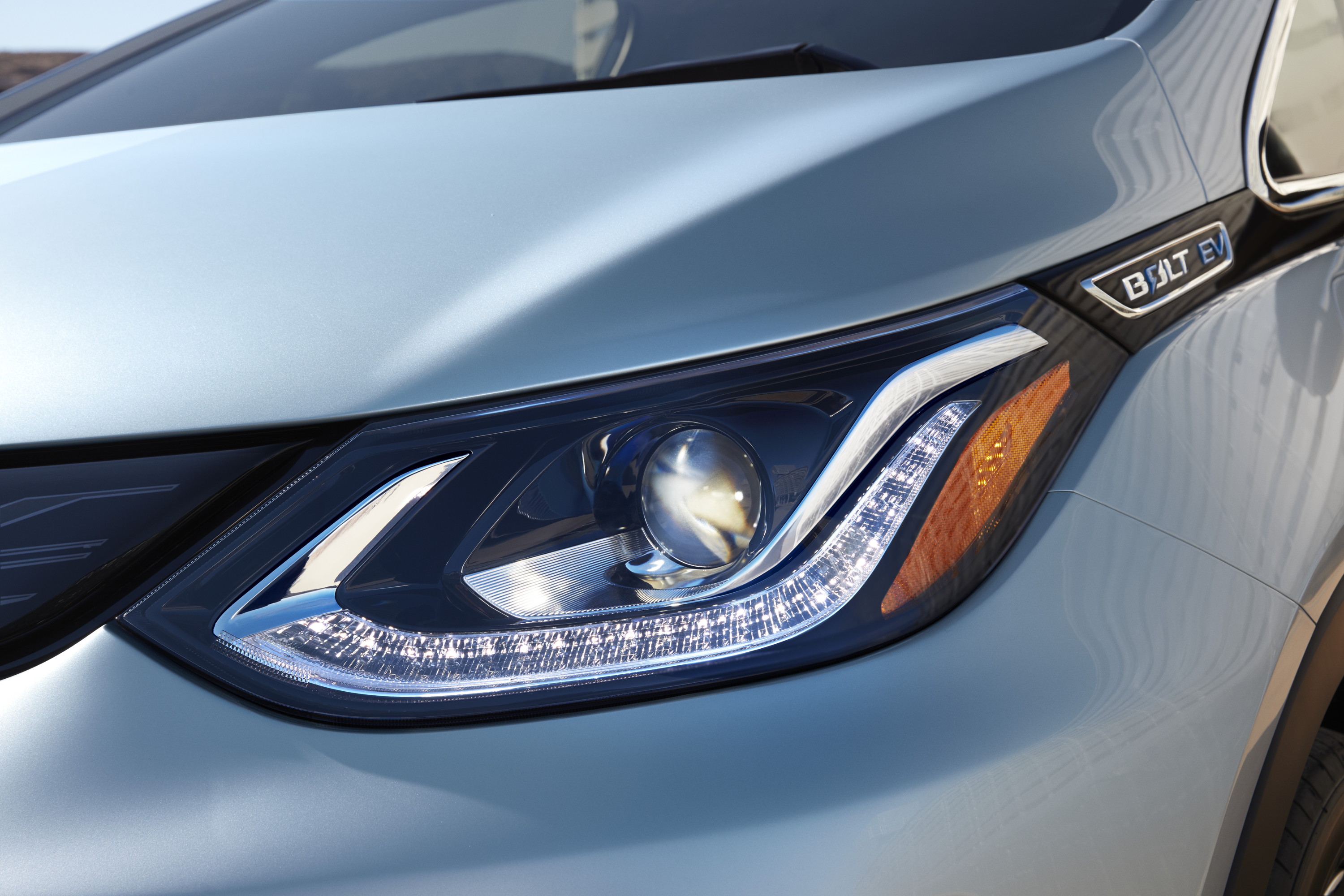The Chevrolet Bolt EV
Watch out, Tesla.
Of the myriad cars on display in Las Vegas for Consumer Technology Association 2016, few have as much potential for change as the Chevrolet Bolt EV. Originally shown as a concept at last year’s North American International Auto Show, the now production-ready Bolt looks to bring all-electric driving to the masses as Chevrolet races to beat Tesla to the market with an affordable and long-range electric vehicle (EV). While Tesla is undoubtedly the current leader in EVs, their cars are priced into the luxury segment and they have yet to deliver on their promise of a $30,000 USD economy model.
The Bolt aims for that critical mix of accessibility, practicality, and price with a 60 kilowatt hour battery system providing juice to a 150 kilowatt motor, which produces some 200 horsepower and 266 pound–feet of torque while offering a range of more than 320 kilometres (besting both the BMW i3 and the Nissan Leaf). Charging is flexible; on a 240 volt supply the Bolt can fully charge its 960 pound battery pack in nine hours, or provide an 80 kilometre top up in just two hours. Connected to the optional DC Fast Charger, the Bolt can charge up to 140 kilometres in just 30 minutes.
Power is delivered by Chevrolet’s Electronic Precision Shift system, which manages power and torque based on drive mode and driver input. Chevrolet says the Bolt will go from 0–96 kilometres per hour in under seven seconds, on its way to a top speed of 145 kilometres per hour. This front-wheel-drive five-door crossover manages an impressive 479 litres of cargo space behind the second row of seating, besting the 470 litres offered by the Honda Fit.
With LED lighting, 17-inch wheels, and full time GPS and LTE connectivity, the Bolt builds on the successes and lessons of the Volt platform. Inside, both passengers and driver are treated to a bright and comfortable cabin featuring a 10.2 inch screen for managing everything from vehicle information to entertainment, a backup camera, and EV-specific mapping that can plan your route for maximum range and efficiency. The Bolt will also be integrated into the new MyChevrolet mobile app, allowing smartphone-based control of vehicle charging, remote start, climate control, and more.
The Bolt appears to offer a mix between the Volt and something similar to the BMW i3. It’s a small, useful car with enough range for mixed use and enough tech to make the entire premise of an EV compelling, even to those who see their car as little more than transport. While the Bolt is certainly not direct competition for the Tesla S, which starts at $75,000 USD and has a range of 385 kilometres, it is something of a pre-emptive strike to undercut Tesla’s plan to produce an accessible entry-level model.
Available later this year and manufactured in Michigan, Chevrolet plans to sell the Bolt for $37,500 USD, leveraging America’s $7,500 EV federal income tax credit to bring the purchase price down to $30,000 (no word yet on Canadian pricing). Compared to its direct competition, the Bolt will be cheaper than the BMW i3 (with greater range and performance) while more than doubling the range of the Nissan Leaf. Tesla may have an early lead in the luxury market, but with the new Bolt, Chevrolet looks to make a play for the mass-market future of EVs.








